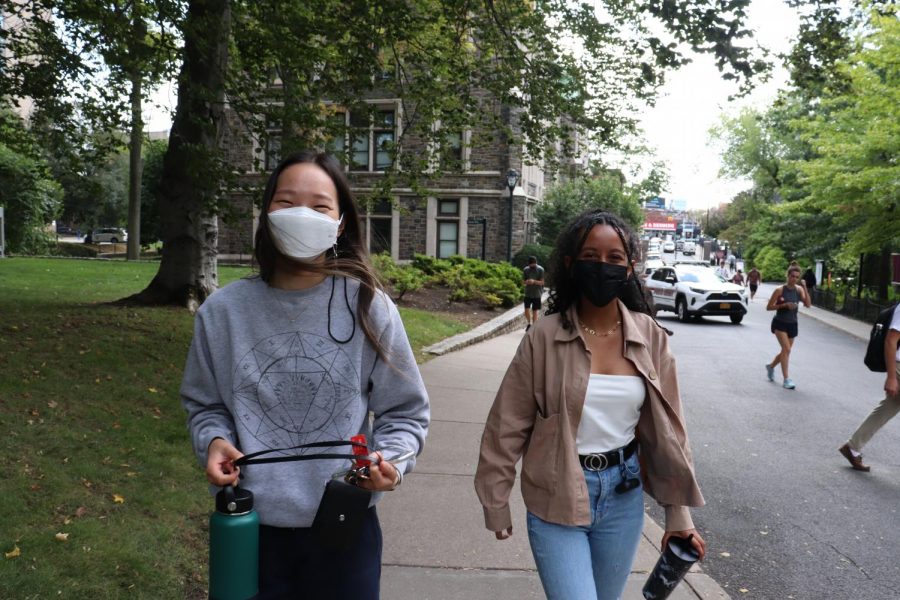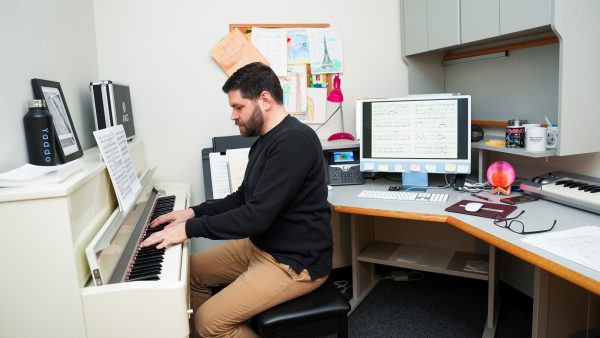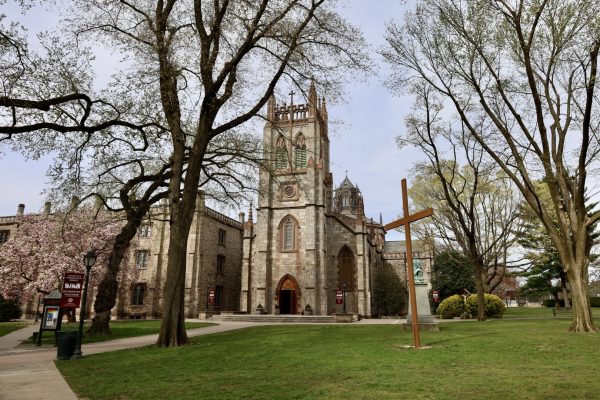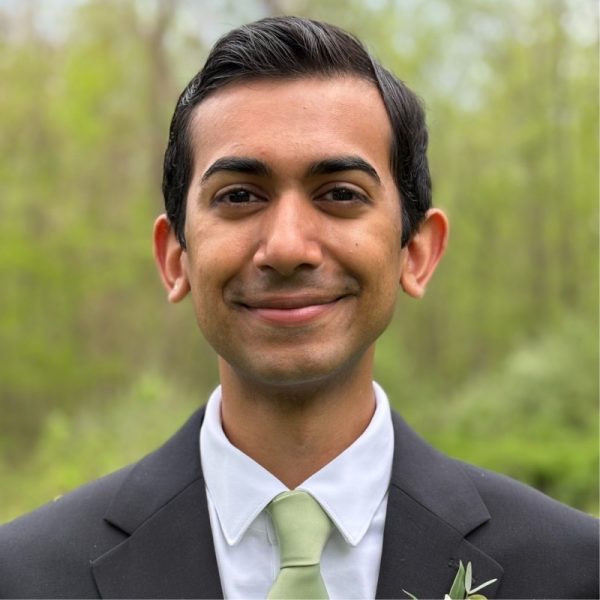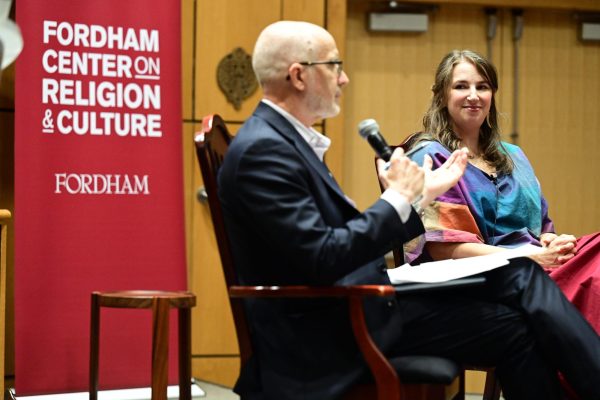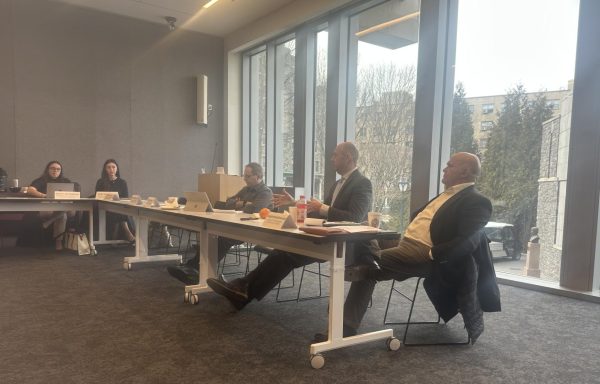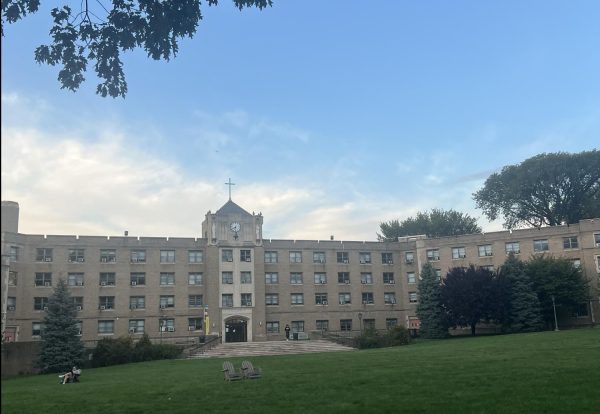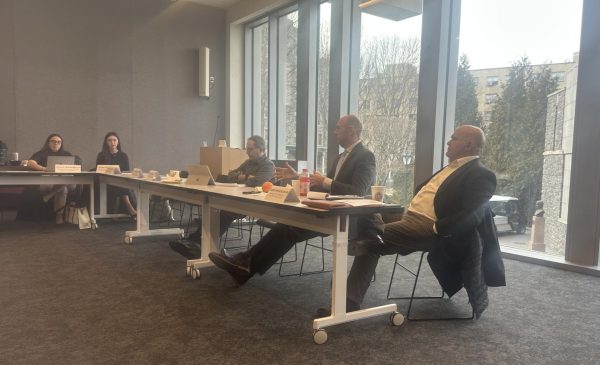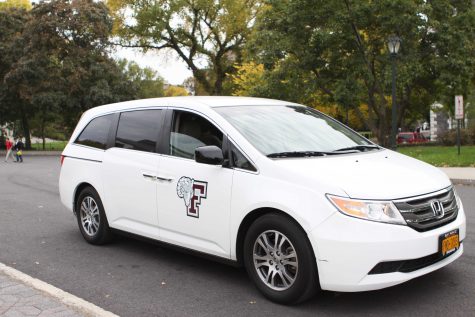Fordham’s Mask Mandate: Who’s Following It?
Vaccinated students must wear face masks indoors but aren’t required to wear them in outdoor areas on campus.
With the delta variant of COVID-19 still spreading throughout the United States, Fordham University adopted the CDC’s recommendation to implement an indoor mask-mandate for the fall 2021 semester. In an email sent to the Fordham community on Aug. 19, two weeks before the start of the academic year, the university announced that all students and employees will be required to wear face masks while indoors on campus, regardless of vaccination status.
This announcement was a disappointment to some students who were excited to be returning to campus for a “normal” school-year after more than a year of online learning. Some members of the Fordham community were also confused as to why the indoor mask-mandate was adopted for the fall when vaccination is also required for all community members to enter campus. Unvaccinated members of the Fordham community are not able to “dine indoors, use indoor athletic facilities nor take part in indoor entertainment events per the New York City policy,” according to Fordham’s official website.
To get a sense of Fordham students’ opinions on the current masking requirements, the Ram conducted a poll. Of the 15 students polled through a Google form, 53.3% felt that masks were redundant with such a high percentage of the community being vaccinated. The other 46.7% preferred the extra protection that masks provide in tandem with the vaccine.
When surveyed on the importance of masks in various locations, many students thought masks are not very important or unnecessary in places like residence halls. Of those surveyed, 66.7% of students felt that masks were unnecessary or not very important in residence halls and 46.7% felt that masks were unnecessary or not very important in the residence hall lounges.
Fordham students are particularly against the mask mandate in the Ram Fit Center, located on the bottom floor of the McGinley Center across from the post office. Sarah Bickford, administrator of fitness and recreation at Fordham, said not every student chooses to follow the official masking policy while working out.
“We tend to have a little 50/50,” said Bickford, “It tends to be once they come in, we’ve been having problems with people going into a studio or an area where they think we can’t see them and they take [their masks] off.”
Surveyed students report that masks “get really hot and stuffy” and are “hard to breathe [in].” 46.6% of surveyed students felt that mask use in the gym is unnecessary or not very important while the other 53.4% felt that masks are kind of important or important. None felt that masks are necessary in the gym.
A reminder for students to wear masks properly is repeated over the loudspeakers every few minutes as fitness center staff members notice people defying the university’s rule, said Bickford. “COVID has mutated, and we just don’t know what it looks like,” she said. “It [could] turn into something else, so we don’t know really, with the vaccination, are we safe, are we not safe? We’re just trying to control the area that we can control down here by making sure everybody is wearing their masks.”
According to the university’s official website, over 98% of Fordham undergraduate students have been vaccinated against COVID-19. Currently, over 98% of university employees are also vaccinated. However, the CDC still recommends that fully vaccinated individuals wear masks in indoor settings in areas in the United States “of substantial or high transmission.”
So, when will the masks come off? There is no clear answer yet. One study published in the New England Journal of Medicine found that the full dosage of the Pfizer vaccine is around 88% effective against the delta variant. As of Saturday, Sept. 18, both New York County and Bronx County are categorized as areas of “high” transmission of COVID-19, according to the CDC’s COVID Data Tracker. A study published by Proceedings of the National Academy of Arts and Sciences (PNAS) found that “places and time periods where mask usage is required or widespread have shown substantially lower community transmission.”
Under CDC guidelines, New York City is considered an area of “high transmission,” defined as an area with over 50 cases per 100,000 residents over the last seven days or 8% test positivity rate over the same period. As of Sept. 20, the Bronx and Manhattan reported 106.26 and 136.98 cases per 100,000 residents, respectively.
For now, expert wisdom seems to indicate that masks are a good way to protect against breakthrough infections that can still occur in vaccinated communities. Until rates fall below the CDC threshold and remain consistent, Fordham students will likely continue to be asked to wear face masks indoors on campus, even when working out in the gym.





































































































































































































